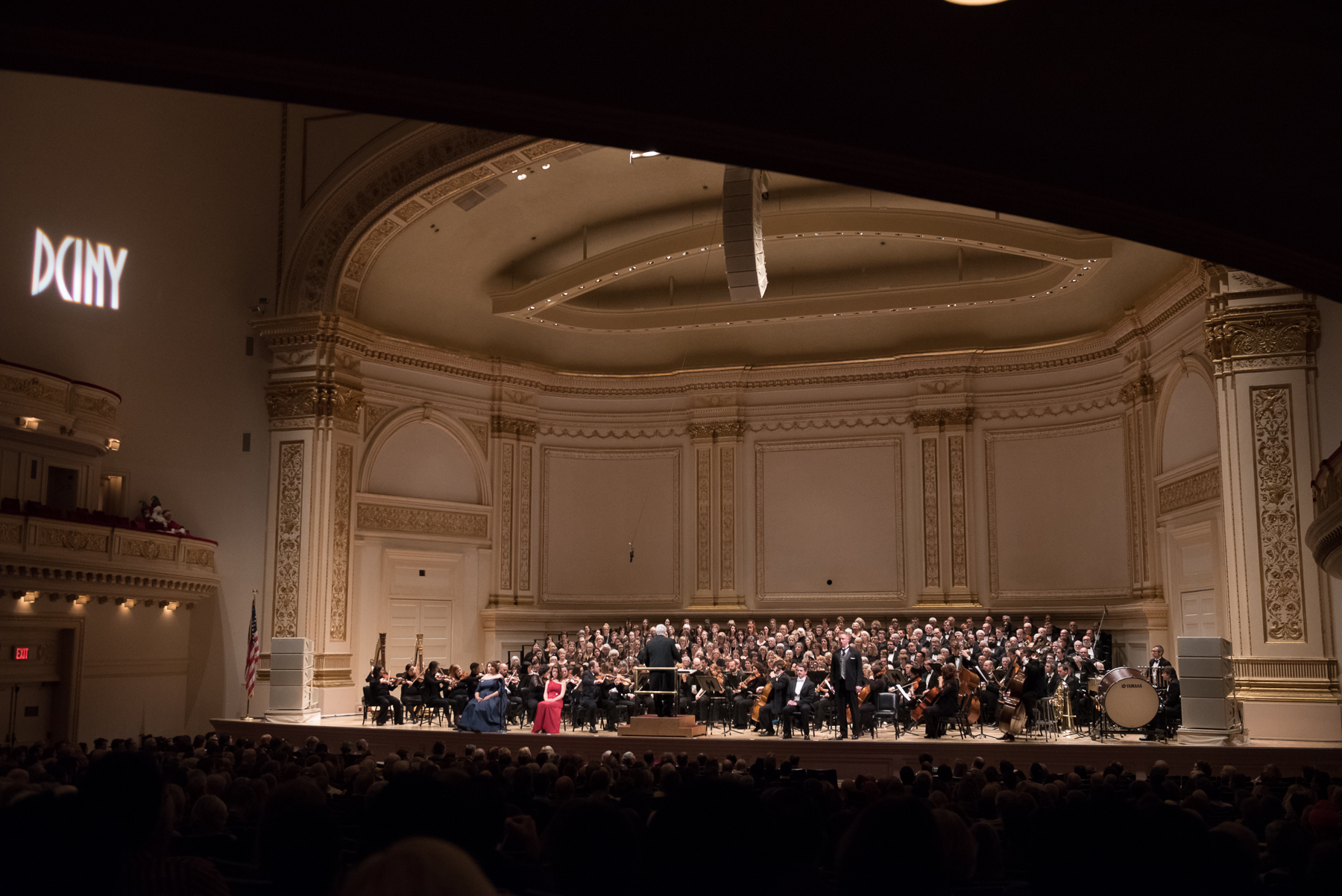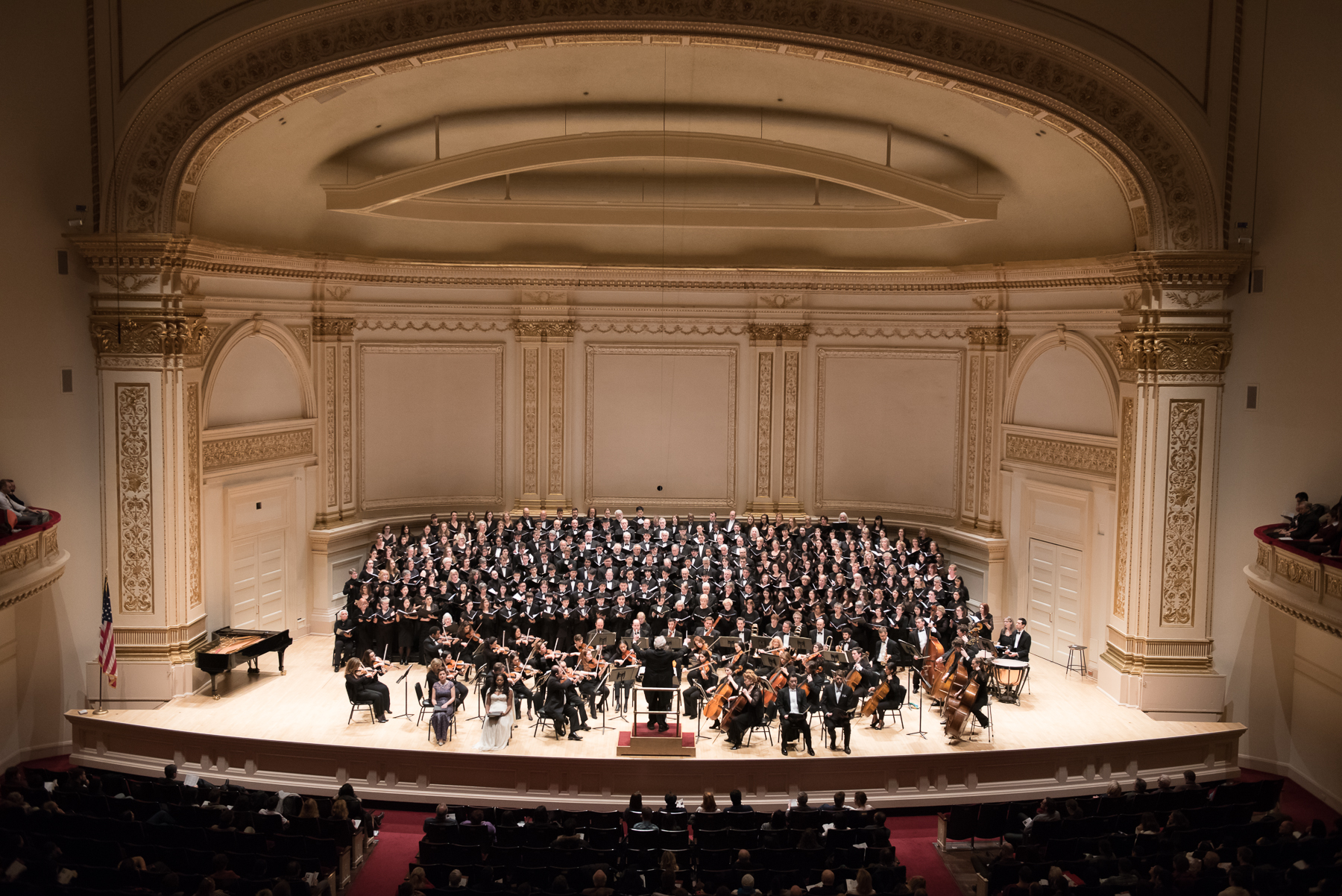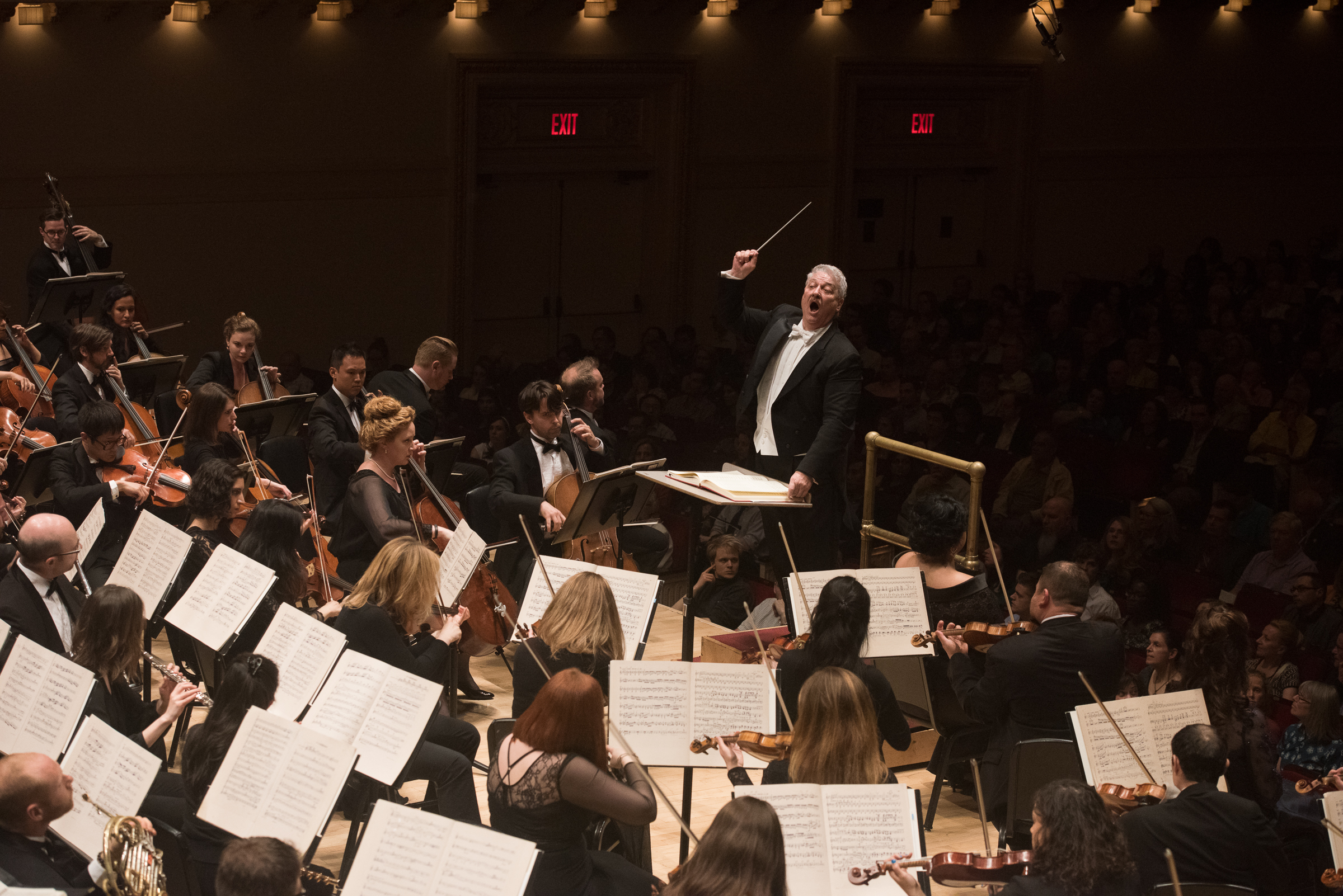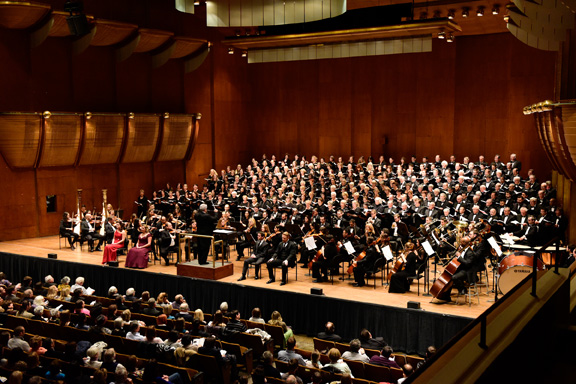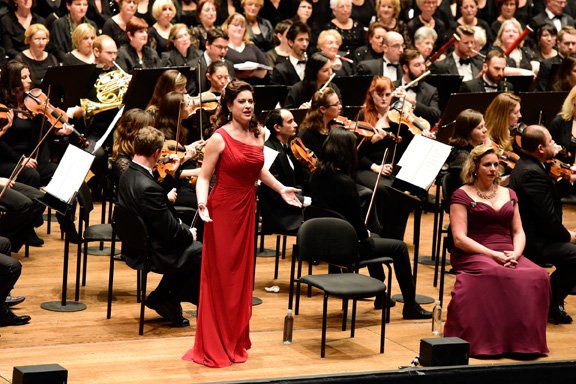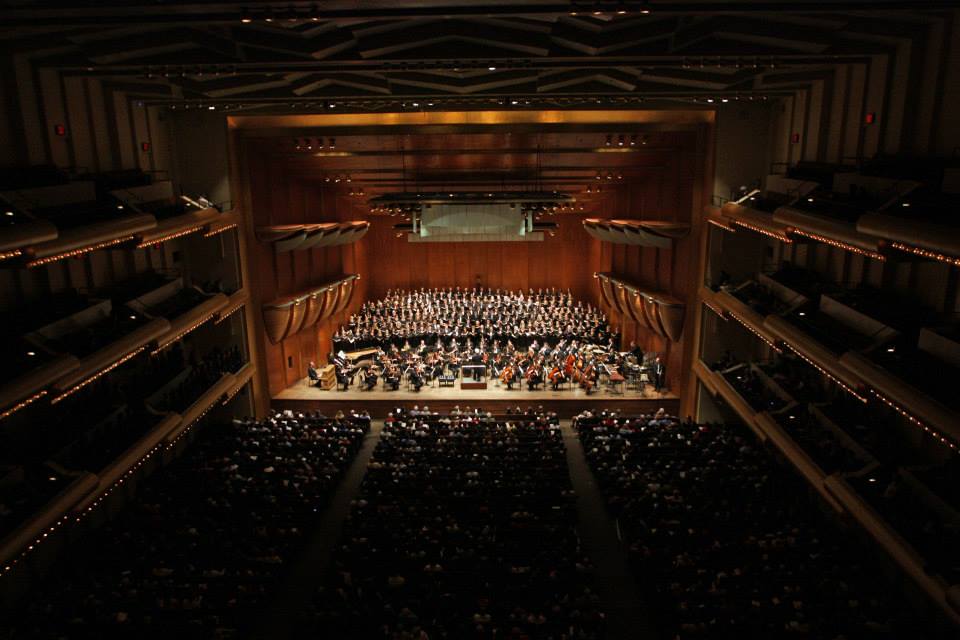Distinguished Concerts Orchestra and Distinguished Concerts Singers International
Jonathan Griffith, Conductor
Penelope Shumate, Soprano
Claudia Chapa, Mezzo-Soprano
John McVeigh, Tenor
Christopher Job, Bariton
Sunday, November 27, 2016, 2 PM
Carnegie Hall, Stern Auditorium
Well, the holiday season is officially here, with the sixth annual presentation of Messiah in the “inflated” version commissioned by Sir Thomas Beecham from Eugene Goossens for the Handel death-bicentennial in 1959. I shall try not to be too Scrooge-like about it, that wouldn’t really be in the spirit of things! I first heard (and reviewed) this version two years ago with pleasure, and the interpretation is remarkably consistent across that time. Only the mezzo-soprano was different (and of course the massed choirs). The whole endeavor, powered by Jonathan Griffith’s committed conducting, gives enjoyment to the performers and to their audience, so after all it must be counted a success, even if one has quibbles with specifics.
Is there any other single work that so identifies its composer, almost to the exclusion of Handel’s numerous other worthy genres: opera, cantata, organ music, anthems, even the other oratorios?
The grand old tradition of Handel-tampering, of course, began with Handel himself and continued through Mozart, Hiller, and many others. Gigantism began as early as 1784 in British performances of the then hallowed Handel with a 513-performer rendition. The European Magazine wrote: “The immense volume and torrent of sound was almost too much for the head or the sense to bear—we were elevated into a species of delirium.” Sir Joshua Reynolds wrote: “I was so delighted that I thought myself in the heavenly regions. The Harmony so unbroken that is was like the fall of Waters from one source, imperceptibly blended. The Spectacle too was sublime, So universal a silence, So great a number of people.” In an 1857 British performance, there were 2000 vocal and 500 instrumental forces. In 1859: 2765 singers, 450 instruments. In 1883: 4000 singers, 500 instruments. Objections to these outsize forces were also found as early as the beginning of the nineteenth century, but they were outweighed by Victorian reverence for Handel combined with the explosive growth of choral societies. G.B. Shaw, in the early twentieth century, also pleaded for something closer to what Handel might have known: “People think that four thousand singers must be four thousand times as impressive as one. This is a mistake: they are not even louder.”
I will confess that when I counted upwards of 400 names in the choral listing in the program booklet, I was a bit nervous. However, Griffith seems to have selected about half of them for Part 1 duty, then they retire to the balconies on either side of the audience, and after intermission the other half performs Parts 2 & 3. Choir 1 did not have clean runs; but Choir 2 did, and Griffith was quite merciless in pursuing brisk tempi that almost prevented anything but a choral smudge. Their block chord work however, was mostly exciting, and he even managed to elicit a few softer sounds from these large forces. All 400-plus joined together for the “Hallelujah” chorus and the concluding “Worthy is the lamb that was slain” for a truly thrilling sound that had actually been missing most of the afternoon in the “mere” 200-voice choirs. Even some audience members couldn’t resist the temptation to add their voices to the mix during “Hallelujah.”
Handel began work in 1741 in London on Messiah for a series of concerts for Irish charities, at the invitation of William Cavendish; the series would include many other works as well. Handel started on 22 August, Part 1 was complete by 28 August, Part 2 by 6 September, and Part 3 on 12 September. A few more days were added, polishing up the results, twenty-four days in all. Of course none of this could have happened without Handel’s well-known recourse to self-borrowing, or even appropriation from other composers, for which he was taken to task more than once in his lifetime. (Although William Boyce reportedly said: “He takes other men’s pebbles and polishes them into diamonds.”) Handel also reworked many numbers from it considerably over the years. Handel himself associated the performance of Messiah with Easter, but modern practice also favors Christmas—the text, dubbed a “Scripture collection” by its creator Charles Jennens, outlines all the festivals of the Christian church-year.
The premiere was in Dublin, 13 April 1742 (at noon), at the New Musick Hall in Fishamble Street, seat of the Charitable Musical Society. The audience capacity was between 600 and 700. Handel had to provide his own organ (portable, called a “bureau” organ) since there was none in the hall. Several of his own organ concerti were also on the bill with Messiah in what must have been a long afternoon of music. The chorus consisted of thirty-two: sixteen men and sixteen boys. The solos were considered so taxing that there was more than one soloist for each voice type.
Today’s soloists were uniformly excellent, with soprano Penelope Shumate and her sparkling coloratura perfection in “Rejoice greatly” and a very affecting “I know that my Redeemer liveth,” though at times her English had an “Italian” accent with many schwas at the end of words (they add clarity, but can be overdone). Claudia Chapa, mezzo-soprano, sang with absolute heart, so much so that I wished “He was despised” was not cut, but would go on forever (I really wanted to hear how she would express “He gave his back to the smiters.”). All afternoon her phrases were of admirable length, she seems to have unlimited air supply. Tenor John McVeigh reprised the sweet lyric quality that I remember so well from two years ago, tending to shade a bit sharp (nerves?) near the beginning, and once in a while chopping up phrases or single words instead of sustaining a legato. His “Behold and see if there is any sorrow” was beautiful. His most endearing trait was the attention he paid to his other colleagues when they were singing their solos, he even turned to face the chorus with an air of painful surprise as they hurled their accusatory “He trusted in God that he would deliver him,” before returning to face forward. Bass Christopher Job again had the perfect sound for the punishing “The trumpet shall sound,” but there were some weird additional musical lines in the orchestra during “The people that walked in darkness” that threatened to “like sheep,” lead the music astray. All the soloists risked being overbalanced by the heavier orchestra, but only at times (too much cymbal!)
May I suggest that Maestro Griffith go ahead and make his own version of this version, so to speak, removing some of the dated bombast and perhaps clarifying a few textures here and there? I do admire his devotion to this “relic” however. By the way, since this is not only about the massed choirs, but a substantial re-orchestration, the fact that the excellent orchestra is not listed person-by-person in the program is a grave injustice. The concertmaster is excellent, and the clarino trumpet was superb. The hushed return of the A section of the “Pifa” (Pastoral Symphony) was gorgeous, as it was two years ago.
The work affords the chance for these dedicated multi-state and international choruses, whose individual conductors were acknowledged at the end, the thrill of a holiday trip to New York and the unparalleled experience of singing on the main stage of Carnegie Hall. Bravo to all, and happy holidays!

